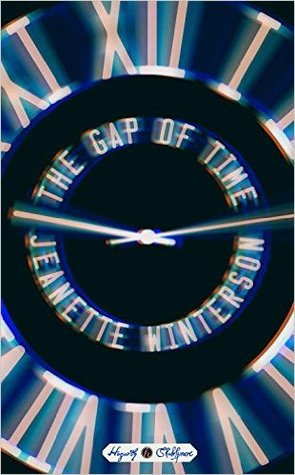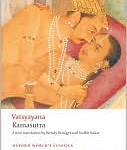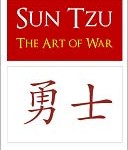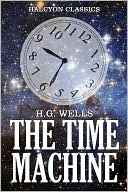 The Gap of Time by Jeanette Winterson
The Gap of Time by Jeanette Winterson Formats available: hardcover, paperback, ebook, audiobook
Series: Hogarth Shakespeare
Pages: 273
Published by Hogarth on October 6th 2015
Purchasing Info: Author's Website, Publisher's Website, Amazon, Barnes & Noble, Kobo, Bookshop.org
Goodreads
The Winter’s Tale is one of Shakespeare’s “late plays.” It tells the story of a king whose jealousy results in the banishment of his baby daughter and the death of his beautiful wife. His daughter is found and brought up by a shepherd on the Bohemian coast, but through a series of extraordinary events, father and daughter, and eventually mother too, are reunited.
In The Gap of Time, Jeanette Winterson’s cover version of The Winter’s Tale, we move from London, a city reeling after the 2008 financial crisis, to a storm-ravaged American city called New Bohemia. Her story is one of childhood friendship, money, status, technology and the elliptical nature of time. Written with energy and wit, this is a story of the consuming power of jealousy on the one hand, and redemption and the enduring love of a lost child on the other.
My Review:
There are occasions where the concept seems way better than the execution, and this may be one of them.
Last year, Hogarth Press, an imprint of Random Penguin, announced that as part of the 400th anniversary of Shakespeare’s death in 2016, they would be commissioning a series of novels by contemporary authors that would be contemporary re-writes of Shakespeare’s plays. It looks like as many as they can manage, stretching out several years, by authors who are generally well-known, well-respected, or both. Anne Tyler will be doing The Taming of the Shrew, and Jo Nesbo will be handling Macbeth. That one I can’t wait to read.
But The Gap of Time is the first book in the series. It is Jeanette Winterson’s new vision of one of Shakespeare’s final plays, The Winter’s Tale.
The plot of The Gap of Time follows the story of The Winter’s Tale close to exactly. Except for somewhat superficial changes of profession and the way the world works differently, the stories are the same. Which means that any synopsis of the play is spoiler-ridden for the book.
One thing that is fairly clear – circumstances may change, but human beings are pretty much the same. The plot is relatively simple, but the execution of the 21st century version gets a bit complex.
In both stories, two men are childhood friends, and that friendship continues into adulthood. Both men are rich and successful. When Leo marries the beautiful and successful Mimi, the friendship between Leo and Xeno opens to include Mimi. It’s never a three-way, but it is pretty clear that everyone loves everyone to some degree or another.
Then Leo goes crazy. He decides, based on absolutely no evidence whatsoever, that Xeno and Mimi are having an affair, and that the child Mimi is carrying is really Xeno’s. There’s no affair and the child is Leo’s.
One of the things that makes the 21st century different from the 17th is that Leo can get a paternity test for the child. He can find out for sure. But when he finally does, he refuses to believe the scientific evidence. As I said, he’s gone round the bend.
Through a series of mishaps and criminal interventions, after the baby is born, Leo gets the little girl shipped off, and through even more mishaps she is adopted by a widower and his teenage son. Little Perdita has a very happy life, knowing she’s adopted but also knowing that she is loved.
It’s only when Perdita herself is on the verge of adulthood that all of the buried secrets finally come out. The effect is both catastrophic and cathartic, but those that deserve it get a happy ending.
Escape Rating C: I liked the last third of this book way more than the first third, even though the story in the first third is more straightforward, right up until the baby abandoning debacle. The last third, while it has its confusing aspects, clips along rapidly, and all of Leo’s many, many mistakes finally get resolved, even though it feels like his ending in this story is the least happy. But then, he doesn’t really deserve happiness at the end of this mess.
Everyone suffers a lot of heartbreak to finally reach that ending. Leo comes off as totally bonkers. He’s gotten a horrible idea fixed in his head, and can’t get it out. That Leo has this particular fixation has more to do with what he’s repressing than anything that he sees in real life. It’s pretty obvious to the reader, and quite possibly everyone else except Leo, that Leo is in love with both his wife and his best friend. The two of them running off together represents his worst fears, that he would lose them both. So he’s rejecting them first.
Giving the baby away, essentially abandoning her, is the crisis that sends everyone’s lives into a complete tailspin. Mimi becomes a recluse, Leo is still successful but totally alone, Xeno becomes an alcoholic hermit. Their lives are on hold for 18 years as the little girl, known as Perdita, grows up.
The catalyst for change occurs when Perdita meets Xeno’s son Zel, and they fall in love. Xeno arrives to spout doom and gloom, Perdita’s adopted father has a stroke, and Perdita learns enough of her own origin story to realize that she might have fallen in love with her half-brother. She and Zel go on a journey to find out the truth, and all of the members of the earlier generation are finally forced to confront each other and the events that drove them apart.
The plot is pretty much the same for both the book and the play, but something gets lost in the gap of time between the early 1600s and the early 2010s. Or things get added and interpreted differently. Or both.
On the one hand, Leo’s obsession with his wife and his best friend makes a bit more sense in contemporary terms. Xeno has no qualms about admitting that he’s gay, and while Leo doesn’t like to talk about it, it’s obvious to readers that he is bi. That he loves both of them and can’t quite admit it makes his motives make a bit more sense. On that other hand, his refusal at first to have a paternity test done, and his later refusal to admit its validity are just plain nuts. In the 1600s, his inability to accept Mimi’s and Xeno’s word that they are not having an affair rests totally on how much he trusts them. Since he doesn’t trust them at all, he doesn’t accept what they say is true. Rejecting the scientific paternity test just seems bizarre.
The way that the baby gets “lost” ends up reading like a visit from the Keystone Kops, along with their more murderous criminals. It’s necessary to the story, but just didn’t make a whole lot of sense to this reader. On the other hand, Leo was completely bonkers by this point.
So the setup was slow and had some bits that didn’t work for modern times. The last act, where everything gets revealed, has the virtue of moving fast. Everything gets wrapped up in a hurry. While it was great to see all the craziness work out and true love triumphant, it felt like the 21st century parts of the plot got left hanging a bit.
As an experiment, The Gap of Time is fascinating. As a story, the updating left some glaring plot holes.
Your iambic pentameter, or lack thereof, may vary.




